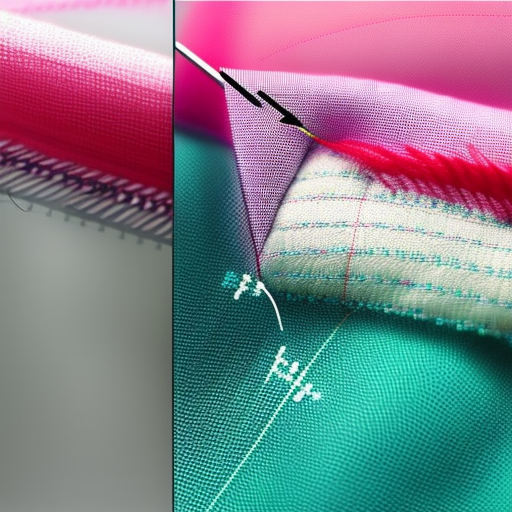Introduction
Learning the basics of sewing techniques is essential for anyone interested in crafting their own clothing or working with fabrics. Sewing is a skill that allows you to repair, modify, or create new garments and home decor items. In this article, we will cover some fundamental sewing techniques that will help you get started on your sewing journey.
1. Hand Sewing
Hand sewing is the foundation of sewing and involves basic stitches like the running stitch, backstitch, and blanket stitch. These stitches are used for various purposes such as hemming, attaching buttons, or joining fabric pieces temporarily or permanently. Hand sewing is an essential technique that is often employed alongside machine sewing for intricate details or finishing touches.
2. Using a Sewing Machine
Investing in a sewing machine is a game-changer for anyone serious about sewing. Sewing machines provide efficient, precise, and quicker stitching options. Learning how to use a sewing machine involves understanding its various parts, threading the machine, and practicing different stitches and techniques such as straight stitch, zigzag stitch, and buttonhole making. With a sewing machine, you can handle larger projects and achieve professional-looking results.
3. Reading and Understanding Patterns
Patterns are templates that guide you in creating garments or other sewing projects. They provide detailed instructions and measurements, allowing you to achieve the desired outcome. Learning to read and understand patterns is crucial for following instructions accurately, cutting fabric pieces correctly, and assembling them in the right order. A well-fitted pattern can make a significant difference in your final product.
4. Sewing Seams and Finishing Edges
Sewing seams involves joining fabric pieces together. There are different types of seams, including straight seams, French seams, and flat-felled seams, each suitable for specific fabric types and projects. Finishing edges prevents fraying and adds a polished look to your pieces. Techniques like serging, zigzag stitching, or using bias tape help secure the raw edges and give a professional touch to your sewing projects.
5. Adding Zippers, Buttons, and Other Fasteners
Attaching zippers, buttons, and other fasteners can seem intimidating, but with practice, it becomes manageable. Zippers are used in clothing, bags, and cushions to provide closures. Buttons, snaps, and hooks add functionality and decorative elements. Learning how to insert zippers correctly, sew buttonholes, and apply various fasteners will expand your sewing possibilities and open doors to more complex projects.
Conclusion
Mastering sewing techniques basics serves as a foundation for your sewing projects. As you gain confidence and experience, you can explore more advanced techniques and create personalized garments or decor items. Remember, practice is key to refining your skills and unleashing your creativity. So, gather your sewing supplies, choose a beginner-friendly project, and start sewing!




